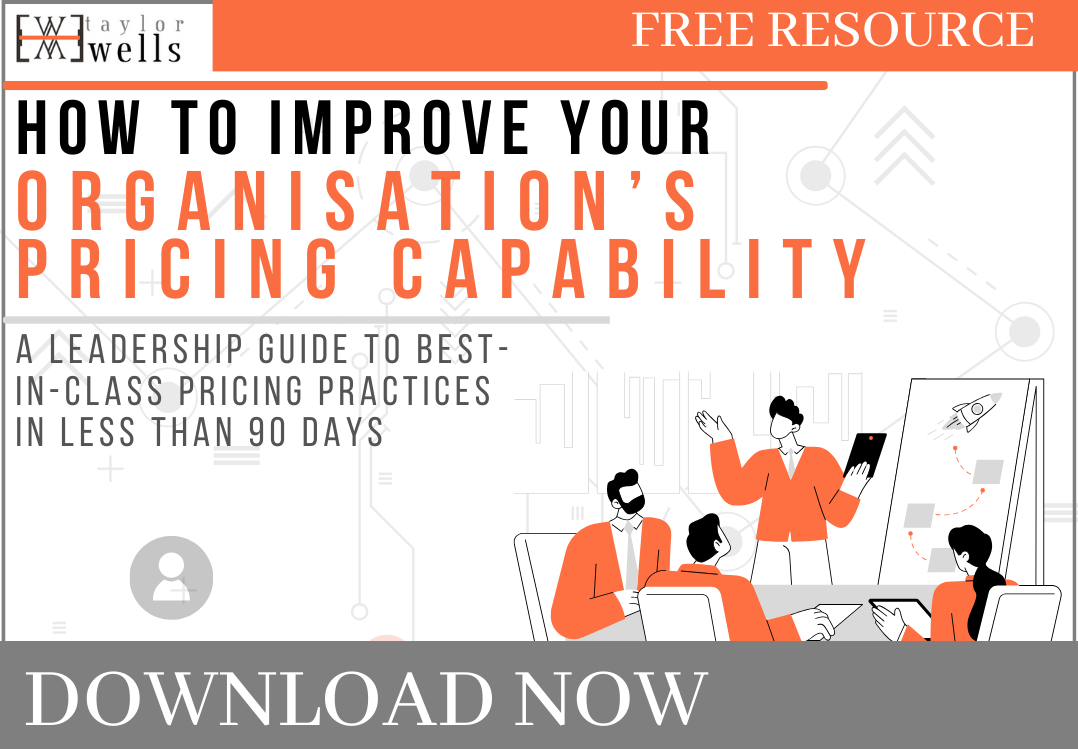
When making a business value management for a company, it is important to know all its assets and liabilities to see it’s profitable enough to put money in it.
>Download Now: Free PDF How to Drive Pricing Strategy to Maximise EBIT Growth
Mostly, investors check on tangible assets. But they overlook intangible assets often. Management is in charge of the effective application of all assets, and how to value business assets under its control, yet very few companies have a good grasp on how to create value in a business using their intangible asset portfolio.
The books of accounting treat tangible assets in detail but provide limited or no information about intangibles. Whatever the case, these may represent the greatest value for the company and the greatest source of potential growth and profits.
Strong sustainable intangible assets help give a company superior pricing power that can deliver high gross margins and recurring revenue. This, in turn, leads to robust profits and strong free cash flow – and a greater distribution of wealth to shareholders.
Tangible assets are those which generally determine a company’s value. The plant and machinery, equipment, land and buildings and inventory are measured and used to calculate return on investment. And how to value your business to sell. These assets are solid, and so the financial decisions are based on the importance of core values in business.
In this article, we will talk about business value management and whether it can be improved using intangible assets. We will also discuss value-based pricing in business value management. In addition, we will provide you with three ways to gauge the value of intangible assets for business value management.
Capability Building Programmes For Pricing & Sales Teams!
Three factors to valuing intangible assets for business value management:
- Quantitative factors – these include financial standards that help determine whether the intangibles are currently producing revenue.
- Qualitative features – assess the strength of the intangible assets
- Contextual factors – does anyone want these intangibles and if so, how much are they willing to pay? Or what do our marketing teams need to do to educate future and existing customers on why they need to buy these products? Is there a real need there or are you really flogging an intangible dead horse?
There’s really no simple way to gauge the value of intangible assets. But these three factors are taken into consideration in valuing them.
Introduction to Value Culture 💡 Podcast Ep. 96!
Example of companies with intangible assets:
- Technology companies with computer companies, copyrights, patents, IT employees, and research and development. They create applications that program the computers and sell them to the public.
- Entertainment and media companies have publishing rights and essential talent personnel making music and writing stories for the shows.
- Consumer products and services companies have formulas and recipes, along with brand name recognition in highly competitive markets. A good example is Coca-Cola, soda drinks are synonymous with it.
- The healthcare industry tends to have brand names, skilled medical professionals, and research and development of medicines and techniques in caring for patients.
- The automobile industry has engine technologies. Closely guarded secrets are alternative fuel source engines and electric-powered cars. Also, brand names like “Corvette” and “Ferrari” are worth billions.
>>>Read about: What Can Auctions Teach B2B About a Customer’s Willingness To Pay?
Other examples of intangible assets to determine business value management
Another special type of intangible asset is goodwill. Or a portion of the entire business value that cannot be attributed to other income-producing business assets.
An example of this is a fast-growing software company. It has net assets (consisting primarily of equipment and/or property, and no liabilities) of $1 million. But the company’s overall value (including customers and intellectual capital) is priced at $10 million. Anyone who wants to buy that company will purchase it for $10 million. Any excess of that $10 million is considered goodwill.
In a private company, goodwill has no predetermined value prior to an acquisition whereas a publicly-traded company is subject to a constant process of market valuation, so goodwill will always be apparent.
Overcoming Pricing Challenges with Business Value Management Techniques
Pricing challenges affect many businesses, from startups to established companies. Common issues include underpricing, customer resistance, and market competition. Business value management techniques provide practical solutions to these challenges by aligning pricing with the value customers perceive.
One key technique is value-based pricing. Instead of focusing on costs, businesses set prices based on the value they deliver. For instance, a digital marketing agency identifies how its campaigns increase client revenue. By communicating this value, it justifies a higher price and overcomes resistance.
Another approach is segmenting customers by their perceived value. Different customers place importance on different factors. For example, a car manufacturer can offer a basic model for cost-conscious buyers and a premium model for customers seeking advanced features. This segmentation ensures the pricing strategy caters to diverse needs.
Clear communication is also essential. Customers often hesitate to pay higher prices if they do not understand the value offered. Businesses can use case studies or testimonials to demonstrate benefits. For instance, a consultancy firm can highlight a client’s success story, showcasing measurable results from its services.
Monitoring market trends is equally important. Competitors and changing customer expectations influence pricing strategies. Business value management involves regularly evaluating market conditions and adjusting prices to stay competitive. For example, a subscription-based software company may introduce flexible plans to match new market demands.
By using business value management techniques, businesses tackle pricing challenges effectively. These strategies ensure prices reflect customer value, improve profitability, and strengthen market positioning.
Value-based Pricing in Business Value Management
In the present economy, the most valuable assets have changed from solid to soft and from tangible to intangible. Instead of operational plants and machinery, companies today compete on ideas, IP and relationships. Having well-established brands is not enough anymore. You also need products that customers need to solve real problems and a business value proposition example that can demonstrate value based on customer perception. Hence, value-based pricing is essential to the valuation of both valuable tangible and intangible assets – and the ongoing growth of your business.
The creation and maintenance of brands, how branding adds value to a business, and understanding product and customer life cycles are becoming more relevant in today’s intensely competitive environment. A strong brand can be an invaluable asset for a company. Through the branding process, brand managers create recognition and can enhance purchase power to their customers.
Intangible assets are non-physical assets of the company. Not measured in conventional accounting terms. Such assets impact a company’s value and some like to categorise intangible value as brand equity, customers, copyrights, human resources, the reputation of the company, supply chain reliability, and research and development made by the company.
The advantage of intangible assets is they’re much more difficult to imitate than tangible assets. Intangible assets are deeply ingrained in the company. Or equally, if you have a network or platform that everyone’s using, it’s very difficult to break into that.
Another advantage is you don’t need to purchase physical assets to increase profits. So the high returns on capital mean that the cash flow in earnings increases.
How to Align Business Value Management with Customer Perceptions of Worth
Aligning business value management with customer perceptions of worth is essential for effective pricing strategies. Customers base their buying decisions on the perceived value of a product or service. Therefore, businesses must understand what their customers value most.
To achieve this, start by conducting customer research. Surveys and interviews reveal what customers consider important. For instance, a software company may learn that customers prioritise ease of use over advanced features. Using this information, the company adjusts its pricing to reflect the value of simplicity.
Next, communicate the value clearly. Highlight how your product or service meets the customer’s specific needs. For example, a consulting firm can emphasise its ability to save clients time and resources, linking its services directly to customer priorities. Strong communication helps customers see the worth behind the price.
Additionally, tailor offerings to specific customer segments. Business value management involves recognising that different groups perceive value differently. A luxury hotel may focus on exclusivity for high-income clients while promoting cost-effectiveness to corporate clients. Segmentation ensures pricing resonates with each group.
Monitor customer feedback regularly. Perceptions of value change over time due to market trends or new competitors. Staying updated allows businesses to adjust pricing strategies and maintain alignment with customer expectations.
By aligning business value management with customer perceptions of worth, businesses foster stronger relationships and improve profitability. This approach ensures pricing reflects the true value customers receive, making it a win-win for all parties involved.
Pricing Recruitment For Pricing Managers!
Implications
- Market value comes from expectations about a company’s future cash flow, which comes in large part from intangibles such as research and development efforts, patents and good old workforce “know-how”.
- It nevertheless pays for investors to try to get an understanding of intangibles. Much accounting research is devoted to coming up with ways of valuing them and techniques are improving. However, they are not really hitting the mark with their valuations and in many ways underselling businesses. Most pricing professionals should get into this area – and private equity should be looking at pricing to leverage the resale value of the businesses they acquire.
- Even though intangible assets do not add any physical value to companies compared to equipment or factories, they are very valuable to the long-term success of companies and should not be disregarded as easily as they seem to be.
〉〉〉 Get Your FREE Pricing Audit 〉〉〉
Bottom Line
- While intangible assets don’t have the obvious physical value of a factory or equipment, if valued correctly, they carry huge profit potential. In fact, they can prove very valuable for a firm and can be a major factor in its long-term success or failure.
- Intangible assets strengthen a business’ pricing power because they are much harder to imitate and offer greater potential for higher returns on capital.
- Investing in pricing, product development and marketing can have a positive impact on the total economic value of your business and the company’s overall viability.
- Finance managers should always realise the need for managing intangible assets. Not only at the time of a crisis but when the business and economy is strong.
- Realising that intangible assets are untapped source help you get the ROI from a business. Once you have bought or want to sell.
Click here to access a free guide on building an effective pricing capability today.
For a comprehensive view on maximising growth in your company, download a complimentary whitepaper on How To Drive Pricing Strategy To Maximise EBIT Growth.
Are you a business in need of help to align your pricing strategy, people and operations to deliver an immediate impact on profit?
If so, please call (+61) 2 9000 1115.
You can also email us at team@taylorwells.com.au if you have any further questions.
Make your pricing world-class!

